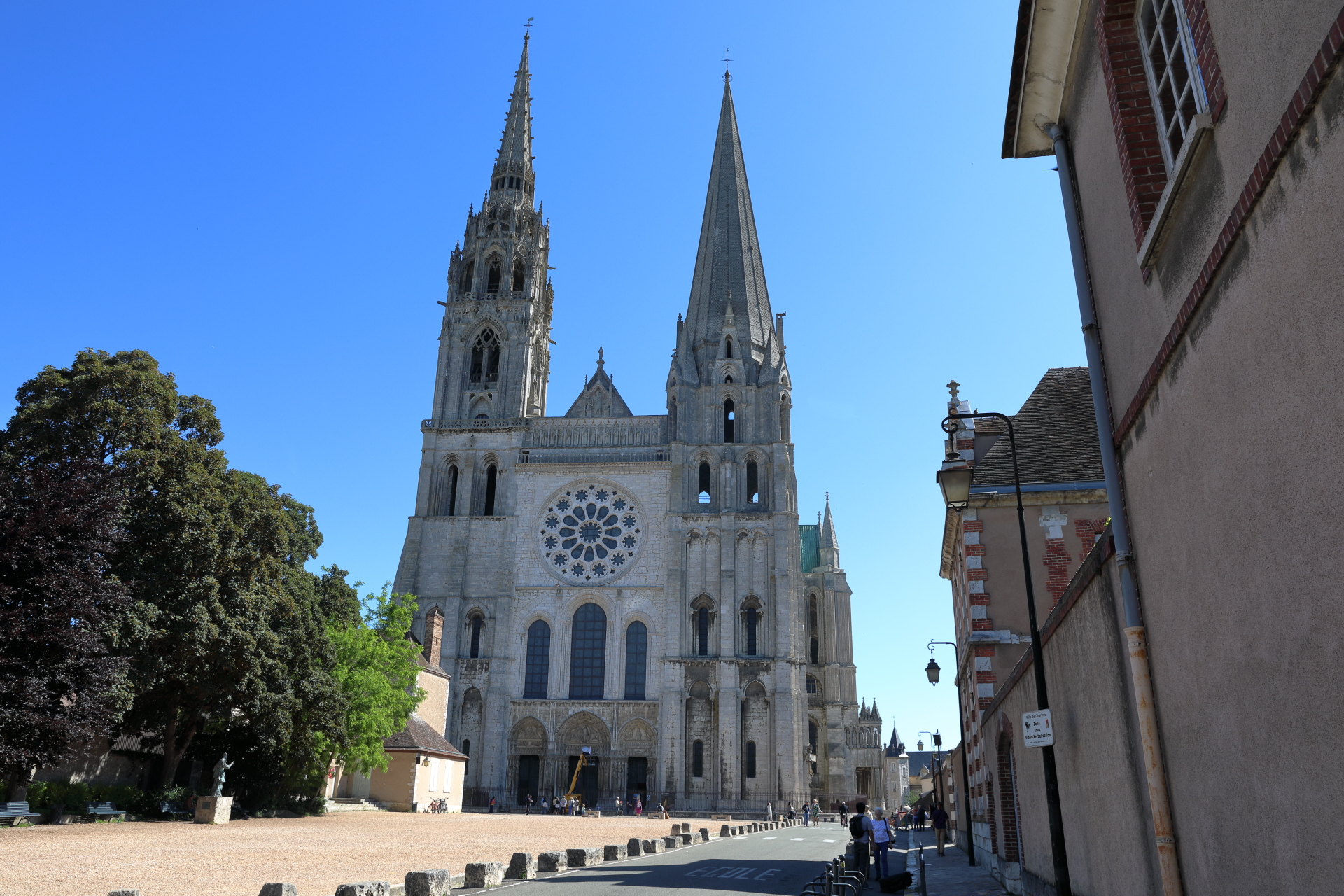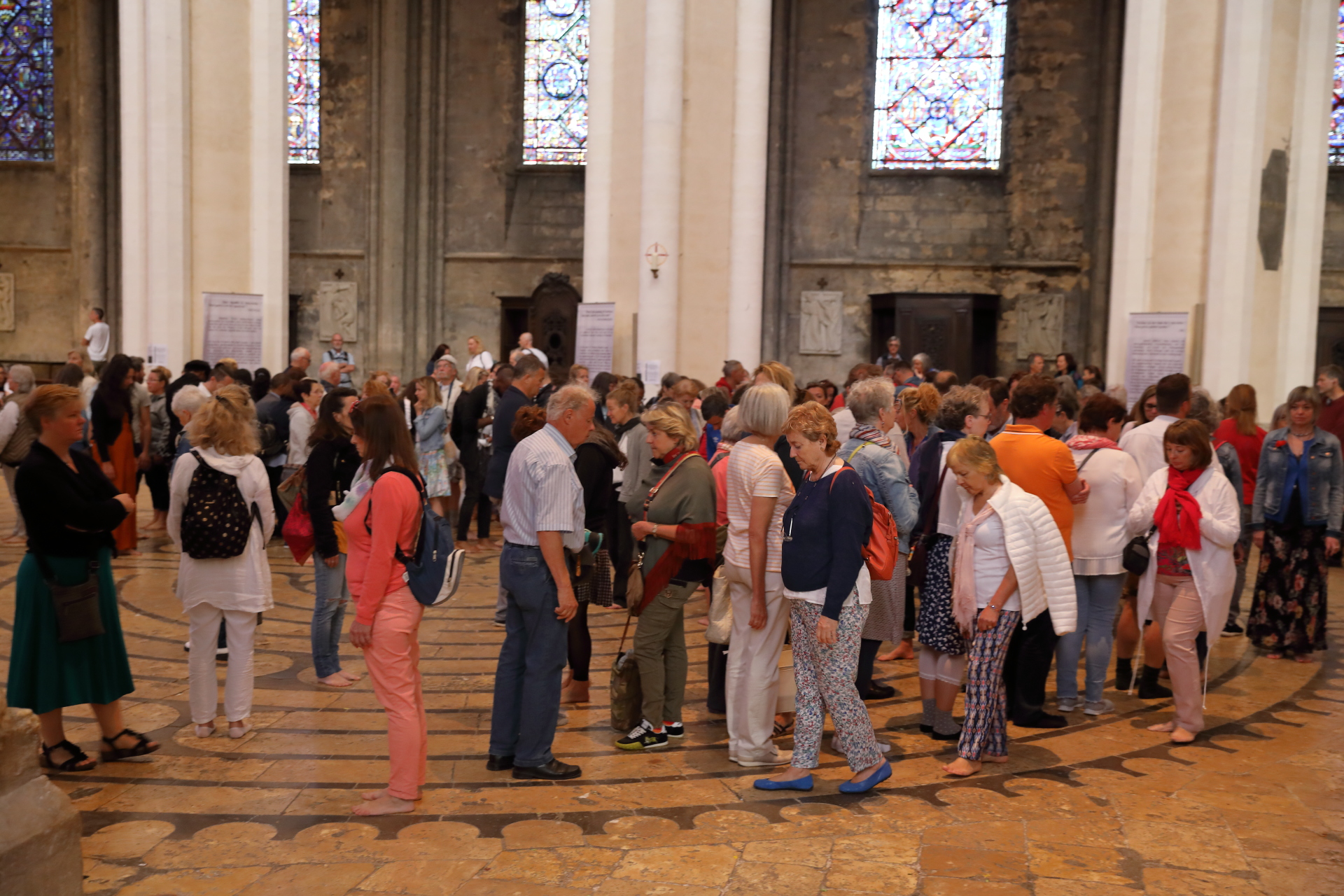God is the Light – the Cathedral of Chartres
In summer 1996 we came back to Chartres for the first time after many years. The cathedral had already fascinated me during my first longer stay in France in 1971. Now, with the plan to shoot a one-hour documentary film for Bayerischer Rundfunk in my luggage, the encounter was many times more intense.

B&B with a farmer family
We moved into our quarters near Chartres at a very nice B&B with a farmer family near the town. that sounds romantic, the old farmhouse was it too. And the young family with two small children gave us a warm welcome. Agriculture near Chartres means large-scale cultivation of grain. Large machines belonged to the farm. The harvest was imminent. So not a trace of quiet rural seclusion.
The end of the film excerpt has a special story. It shows the cathedral from a place to the east where the sun goes down directly above the church in the evening. It was not easy to find this point on a small road 10, 12 kilometres to the east of the cathedral, especially as the research took place in June, but the photographs were scheduled for September. But we found the place, it is on one of the paths that students from Paris take every year on Palm Sunday on their pilgrimage to Chartres.
The pilgrimage on Palm Sunday
When we filmed the pilgrimage on Palm Sunday 1997, over 5,000 students took part in the pilgrimage. When the pilgrims arrive in Chartres, they gather with their palm branches in front of the closed portal. Cardinal Lustiger opened the royal portal of the church with hard blows and the crowd of pilgrims advanced into the huge nave – symbol of the entry of Jesus into Jerusalem. An incredibly deeply moving experience. The cameraman Philipp Müller “swam” with his Steadycam in the middle of the students streaming into the church. To the displeasure of the Cardinal, he turned from the altar when the mass had already begun. These are the moments when the director gets into conflict. We were allowed to disturb, yes had to disturb, but better from the background. But the really spectacular shots are at the front.

The Labyrinth
On one day in September 1996, with some helpers, we managed to get all the chairs out of the church to film the great labyrinth. We had a 10 meter high camera crane into the cathedral. The use of a drone, at that time there were just the first models, had been forbidden. The reason was that a team of the BBC had steered a drone into one of the irreplaceable church windows. The cameras still weighed a few kilos and a few panes broke. But fortunately they were not the most valuable “Bleu de Chartres” specimens. Filming the labyrinth with the heavy crane was a really difficult task. At the end there was the salvation we deserved – the shots from a height of 10 meters were excellent. The mysterious labyrinth invites us to a spiritual journey. Who am I? What is the meaning of life?

Bleu de Chartres
We also studied glass production at that time and finally filmed it in St. Etienne in the south of France. Cobalt, antimony, copper and iron in a sodium melt produce an intensely luminous blue glass. Only in Chartres can you still see this original glass from the 12th century. Today the restorers are very careful to repair damaged glass with new panes made according to the original recipes. But most of the glass surfaces in the cathedral are original. “God is light” – the coloured windows of the cathedral shining in the morning light create an incomparable atmosphere.
Filming is also work with light. At the end of the day, when the Jesse window in the cathedral of Chartres begins to glow, our soul receives the deep contact to that which drives and moves us in our innermost being.
The film “Chartres or the Gothic Spirit” has been shown on various ARD channels and in other European countries. In France, the film by Ulrike and Stephan Bleek was also included in the film programme for schools.

The Places of World Cultures – Chartres and the Gothic Spirit
A documentary about the cathedral of Chartres (BR 1997)
Book: Ulrike Ziegler
Director: Stephan Bleek
Camera: Hermann Reichmann, Philipp Müller
Editing: Katharina Sanders
